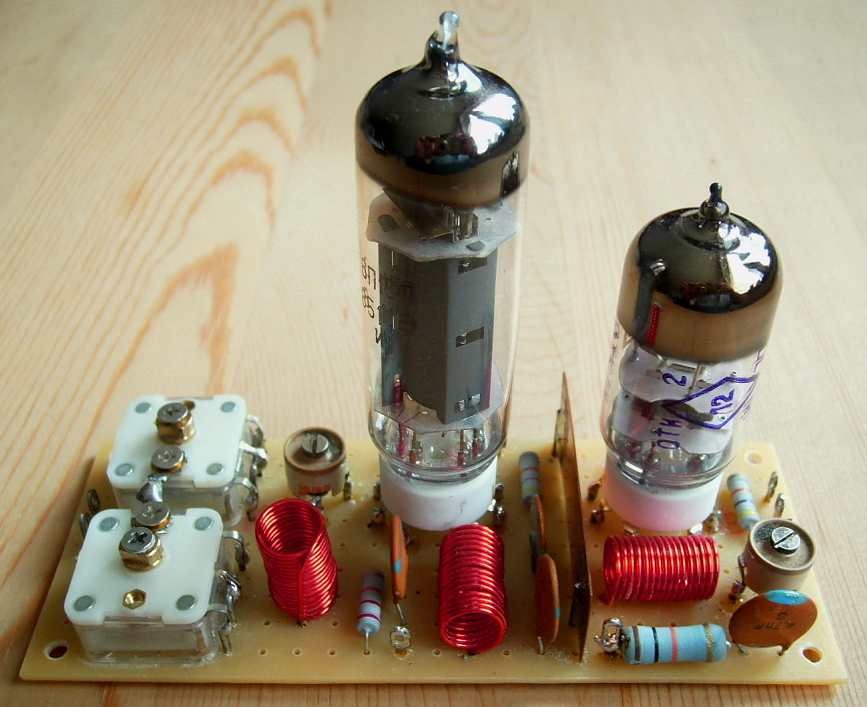DIY tube transmitter for the 10m amateur band
My first experiences with self-built radio stations I collected in the upper shortwave range. I first built circuits with transistors that were widely released for remote control purposes in specialized literature and electronic journals at that time.

After many failures, probably also because of the lack of experience at that time, I tried it with tubes, freely after the explanations of Karl Schultheiß in Der Kurzwellen-Amateur (The Shortwave Amateur) and Werner W. Diefenbach in his Amateurfunk-Handbuch (Ham Radio Handbook). The breakthrough came with a circuit as shown here.
It was easy to achieve a power of about 4 watts. With the shown modulation at the screen grid, I achieved the best results with the least amount of effort. A special modulation transformer for anode-screen-grid modulation was not available to me. In this circuit of modulating the screen grid I could use a usual output transformer from a spent tube radio receiver and as a modulation amplifier any transistor or tube amplifier with 5-ohm output. With the 10kOhm trimmer, the screen grid voltage of the EL84 had to be set to approx. 140 volts (without modulation).

The photo shows a similar transmitter, which I built up not too long ago for further experiments with this circuit concept. It is built with the Russian tubes 6С3П (6S3P) in the oscillator and 6П15П (6P15P) in the final stage and has comparable characteristics. However, the output power is a bit smaller here. In addition, a pi filter is present in the transmitter output, which is tuned with two rotary capacitors, actually intended for AM broadcast receivers.
It turned out that the Pierce oscillator, which as known is a parallel resonant oscillator, oscillates at a slightly too high frequency with most overtone crystals. The deviation is approximately in the range of 2 to 6 kHz for most such crystals. Remedy creates a tuning coil in series with the quartz or even better a trimmer capacitor parallel to the quartz. Experiments will help one quickly at this point.